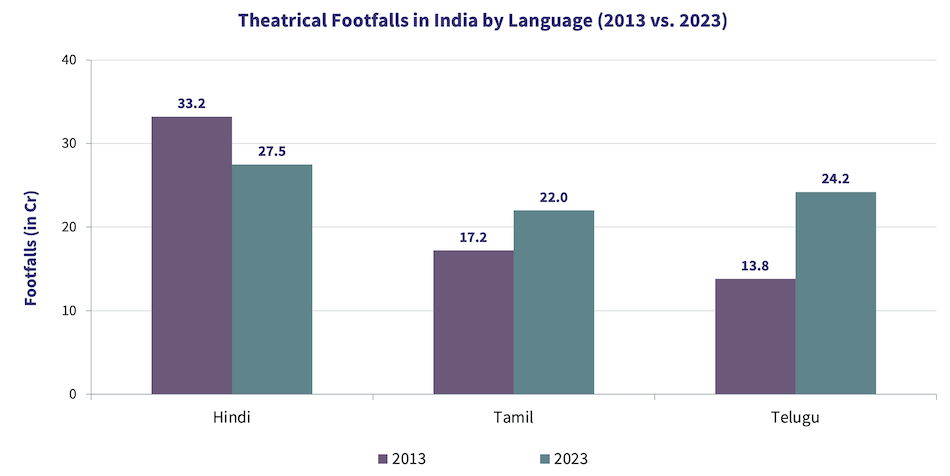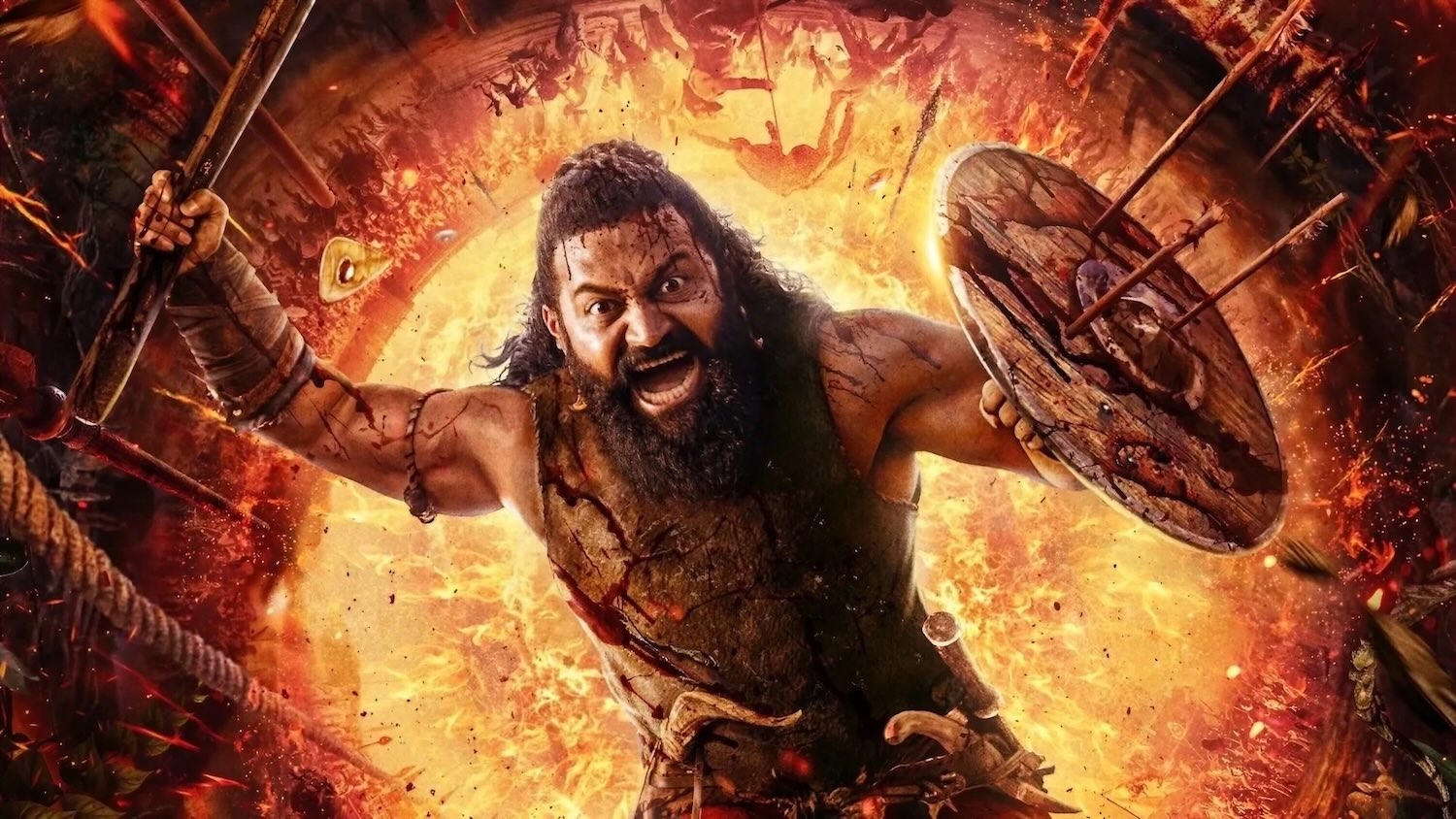


There’s a striking similarity between the two highest-grossing films at the Indian box office in 2023, Jawan and Animal. Both are Hindi language films with a top Hindi star in the titular role, but have been directed by directors from South India, i.e., Atlee and Sandeep Reddy Vanga respectively. While a sample size of just two instances could also be interpreted as mere coincidence, the specificity of this similarity warrants more analysis. After all, it has been 39 years since this happened! Back in 1984, the two highest-grossing Hindi films were directed by South Indian film directors: Tohfa by K. Raghavendra Rao, and Maqsad by K. Bapaiah. Since then, there have been instances of commercial success via collaborations of South directors with Hindi film stars, such as Ghajini, Wanted and Rowdy Rathore. But the collective performance of Jawan and Animal, coming within three months of each other, can be seen as the potential trend-in-the-making.

Post pandemic with the advent of OTT, the theatrical taste of the audience has undergone a significant change. Theatrical worthiness has emerged as a decisive factor in audience’s decision to select (or reject) a film for out-of-home (cinema) viewing. And top directors from South India have an advantage in delivering a ‘theatrical worthy’ experience, as their industries (especially Telugu and Tamil) have been doing it consistently over the past three decades. There are four key factors contributing to theatrical worthiness, in this context, that are worth examining:
Re-imagining a star
Interestingly both Jawan and Animal star Hindi actors (Shah Rukh Khan and Ranbir Kapoor) who had a rough patch of almost 6-7 years at the box office. While Pathaan and Tu Jhoothi Main Makkaar were hits, they would have been signed around the same time as Jawan and Animal respectively. There is a strong element of ‘re-imagining the actor in a new avatar that the audience hasn’t seen before’ that works for the two top grossers of 2023. For the longest time, both Shah Rukh Khan and Ranbir Kapoor differentiated themselves from their contemporaries by capitalizing on their image as charming, romantic heroes, with the occasional ‘intense’ performance thrown in for variety. Hence, re-imagining Shah Rukh Khan as a vigilante messiah, and Ranbir Kapoor as a dark, dysfunctional gangster, are great examples of breaking of the star stereotype in a way that surprises the audience, and pleasantly so. Directors from South India have a good track record of giving ‘cinematic re-births’ to Hindi actors. Besides Ghajini (AR Murugadoss presenting Aamir Khan as an action hero) and Wanted (Prabhu Deva’s film created the action star image for Salman Khan in 2009, which Dabangg went on to solidify a year later), we also have the case of Priyadarshan re-inventing action star Akshay Kumar as a comedy hero, in films like Hera Pheri and Bhool Bhulaiyaa.
Unique stories, imaginative treatment
Over the last few years (post the Bahubali franchise), South Indian films have come to be known for their unique style of story presentation, where imaginative themes and stories are combined with equally imaginative treatment. K.G.F: Chapter 2, RRR, Pushpa, and Kantara have been runaway successes in Hindi because of their ability to quench the audience’s thirst for bold and new-age storytelling, even when the stories are rooted in our culture. Directors from South India, none less than SS Rajamouli and Lokesh Kanagaraj, have managed to push the envelope in this regard. Hindi cinema, instead, has moved in the direction of more realistic storytelling in the multiplex era, often catering to audiences in the top 10 cities as a result. It is no surprise then, that Telugu and Tamil film industries have shown healthy growth in footfalls over the last decade, while footfalls in Hindi have actually gone down.

Fan service
One of the reasons why directors from South India can enhance the stardom of Hindi actors can be traced to the culture of fandom in films from the South. Monikers for the top male stars make their way into the films, often in signature fonts. ‘Tribute scenes’ in big-ticket South film provide an insight into a culture of filmmaking where the actor’s imagery and character in the film are combined to create a larger-than-life avatar, that elevates the film’s experience. Hindi cinema has largely been bereft of this fan service approach for at least two decades now, and directors from South India have managed to infuse this into Hindi cinema, addressing a crucial need gap.
The ‘youth’ factor
A fairly-young brigade of directors is driving this change in storytelling styles in the Telugu and Tamil industries. Atlee, Kartik Subbaraj, Nelson, Lokesh Kanagaraj, and Sandeep Reddy Vanga are all directors in their late 30s or early 40s. They have grown up on a certain type of mass, star-led cinema made by directors in the generation before them, but have been able to infuse it with a younger, more contemporary take, which has ensured that this style remains relevant to the youth of today.
This blend of youthful sensibilities, and the courage to experiment even more, is also reflective in how the music of these films, both the soundtrack and the background score, is approached. It is well recognized that Animal has benefited immensely from its highly-unconventional approach of using rousing music pieces in key action sequences. The youthfulness also extends to the music industry in the South. 35-year old Anirudh is the music director of three of the top 7 grossing films of 2023 at the Indian box office, namely Jawan, Jailer and Leo.
To summarize, Hindi film audiences are now open, more than ever before, to theatrical-worthy cinema, regardless of the boundaries of language and geography. The Hindi language has a significant reach advantage because of the sheer volume of current and potential audiences. However, a mismatch between audience expectations and content supply has created a void of sorts, and the sharp growth of streaming during the pandemic has accentuated this void. Any maker who fills this void has a strong chance of creating memorable (and successful) experiences in the movie theatres. In the near future at least, the combination of reach (that Hindi cinema provides) with the sensibility of making theatrical-worthy cinema (that South directors have an advantage with) could drive the Indian box office narrative. With time, one can expect more directors from the Hindi film industry to espouse the sensibility that makes for box office friendly content. It may come with certain homogenization of content, especially genre-wise. But that’s a fair trade-off if it fuels box office growth. Especially when there’s OTT for all other forms of content.

Ormax Cinematix's FBO: Accuracy update (November 2025)
This edition of our monthly blog summarises Ormax Cinematix's box office forecasts (FBO) for all major November 2025 releases vis-à-vis their actual box-office openings

Product update: Content testing for the horror genre
Based on our accumulated audience insights, we are introducing genre-specific drivers for horror films and series in our content testing tools, Ormax Moviescope and Ormax Stream Test

The India Box Office Report: October 2025
Driven by Kantara - A Legend: Chapter-1, October 2025 has emerged as the highest-grossing box office month of the year at the India box office, with gross collections of ₹1,669 Cr
Subscribe to stay updated with our latest insights
We use cookies to improve your experience on this site. To find out more, read our Privacy Policy